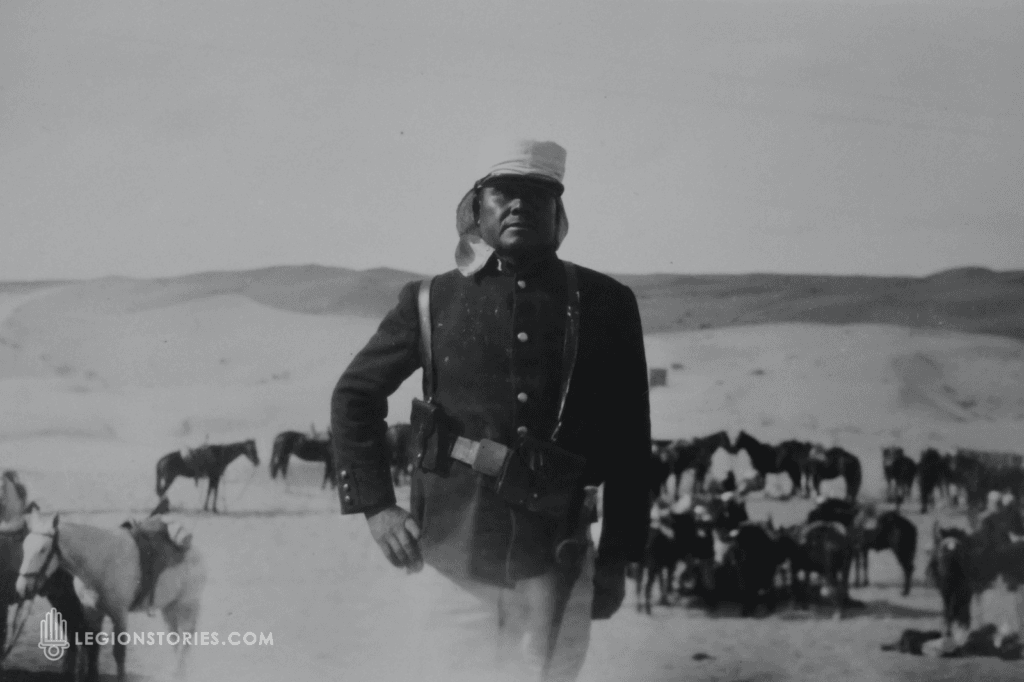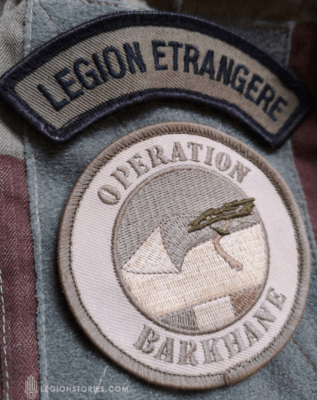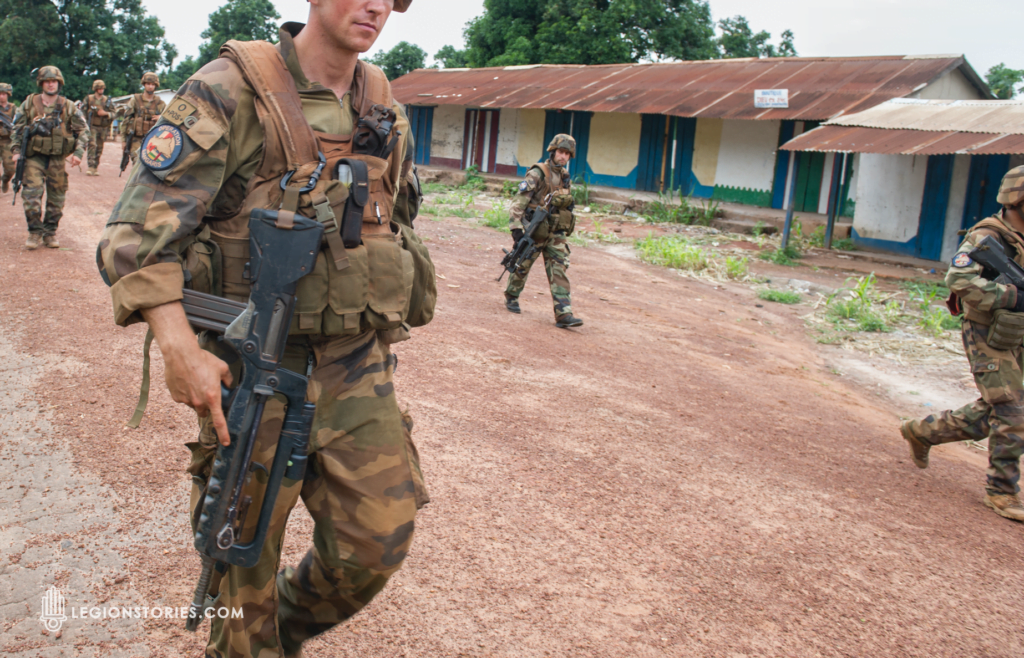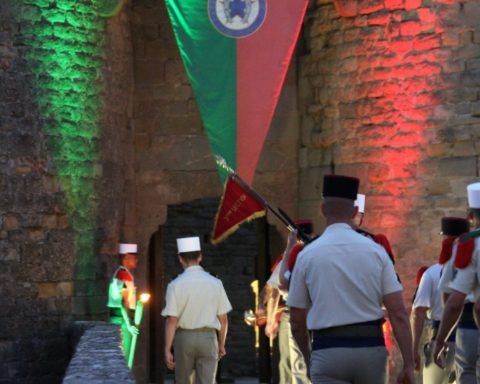The French Foreign Legion is a military service branch of the French Army, created in 1831 by Louis Philippe.
Commanded by French officers, it’s also open to French citizens. The French Foreign Legion is a unit whose training focuses not only on traditional military skills but also on its strong esprit de corps. As its men come from different countries with different cultures, this is a way to strengthen them enough to work as a team.
Get ready for the
French Foreign Legion
IQ tests,
Training
plans,
french
Vocabulary
and more.
Download Legion Training for free!
The training is often described as not only physically challenging, but also psychologically stressful.
Since 1831, the Legion has suffered the loss of nearly 40,000 men on active service In France, Algeria, Morocco, Tunisia, Madagascar, West Africa, Mexico, Italy, the Crimea, Spain, Indo-China, Norway, Loyada, Syria, Chad, Zaïre, Lebanon, Central Africa, Gabon, Kuwait, Rwanda, Djibouti, Ex-Yugoslavia, Somalia, Republic of Congo, Ivory Coast, Afghanistan, Mali, Sahel and others.
History of the French Foreign Legion
Louis Philippe, the King of the French, created the French Foreign Legion on 10 March 1831. Firstly, recruits included soldiers from the recently disbanded Swiss and German foreign regiments of the Bourbon monarchy. The French expeditionary force that had occupied Algiers in 1830 was in need of reinforcements, therefore the Legion was transferred by sea in detachments from Toulon to Algeria.
The Foreign Legion was primarily used as part of the Armée d’Afrique to protect and expand the French colonial empire during the 19th century.
The FFL also fought in almost all French wars including
- the Franco-Prussian War
- World War I
- and World War II
The French Foreign Legion has remained an important part of the French Army. Surviving three Republics, the Second French Empire and even two World Wars. The rise and fall of mass conscript armies, the dismantling of the French colonial empire and the loss of the Foreign Legion’s base, Algeria.

Prior to the end of the Algerian War, the legion hadn’t been stationed in mainland France except in wartime. Until 1962, the Foreign Legion headquarters was located in Sidi Bel Abbès, Algeria.
Today, some units of the Legion are in Corsica or overseas possessions (mainly in French Guyana, guarding Guiana Space Centre), while the rest are in the south of mainland France. The current headquarter is in Aubagne, France.
What’s the difference between the French Army and the French Foreign Legion?
The biggest difference between the French Army and the French Foreign Legion is that the Legion accepts people from each country. Not only from France but also from all around the world.
Nowadays, more than 140 nationalities are living and working together.
Each legionnaire sign a contract “à titre étranger” (on a foreign basis), so Legionnaires can only change regiment within the French Foreign Legion.
For example, you are working as a combat medic. So if you want to change regiment, you can’t go to a French unit like the 1st Infantry Regiment. This small detail could become very important later.
Current operations of the French Foreign Legion
The current operations of the Foreign Legion are:
- Sahel area – Operation BARKHANE
- Lebanon – Operation DAMAN
- French Guyana – Operation HARPIE
- French Guyana – Operation TITAN
- France – Operation SENTINELLE
- France – Operation RESILIENCE
Sahel – Operation BARKHANE
At the request of the Malian President, France intervened militarily in January 2013. Above all, Operation Serval had to stop the advance of jihadist forces and allow the country to regain its territorial integrity.
After the elections in 2013 Ibrahim Boubacar Keïta gathered most of the votes and became President of the Republic. In 2015, the non-terrorist rebel groups and the government signed an Agreement for Peace and Reconciliation in Mali. France supports Mali in the implementation of this agreement.
Operation Barkhane replaced operation Serval on 1 August 2014 to provide support of the French forces to Mali but also to the other G5 Sahel states (Burkina Faso, Mauritania, Niger and Chad) in their fight against terrorism.

Barkhane is made up, among others, of 5,100 French soldiers, drones, fighter planes and helicopters. With this operation, France provides operational support to the joint G5 Sahel force and to MINUSMA when threatened by serious and imminent danger.
The fundamental objective of the operation is to enable the armies of the Sahel, in the long term, to ensure their security on their own. Read more…
Lebanon – Operation DAMAN
Present since 1978 in Lebanon, France is one of the main contributing countries of the United Nations Interim Force in Lebanon (UNIFIL). Currently with nearly 800 soldiers, France deploys its soldiers in Lebanon as part of Operation Daman.
The French contingent arms the backbone of the Force Commander Reserve (FCR), which is able to intervene very quickly for the benefit of all the contingents deployed on the entire UNIFIL action area. The representative French elements is a general officer, who is also the chief of staff of UNIFIL. The headquarters’ location is in Naqoura.
The missions of the Force Commander Reserve (FCR)
The FCR has around 800 French but also Finnish soldiers. Since March 2017, Finland deploys a company to reinforce the French contingent. As a sign of good bilateral cooperation, this deployment is carried out in a logic of support for the international commitments. The FCR is notably equipped with armored personnel carriers (VAB and SISU), light armored vehicles (LAV), and Mistral surface-to-air missiles. The FCR is under the direct orders of the Force Commander of UNIFIL.
The French Foreign Legion frequently participates in this operation and lost a member in March 2020. Read more…
French Guyana – Operation HARPIE and TITAN
Harpie
Operation Harpie has been in place for twelve years since its official launch on 11 February 2008.
Above all, operation Harpie aims to stop illegal gold mining and thereby reducing its economic, social and environmental impact. The operations take place in extreme conditions, because the geography and the climate make missions and logistics difficult. As distances are huge, it’s not easy to ensure a permanent military presence in the rainforest covering 90% of the country. With 90 to 95% humidity during the rainy season, combined with an average temperature of 30°C, makes the task particularly difficult. The progress is challenging in the jungle. If you didn’t forget anything, you’ll have around 30 kg in your backpack.

Operation Harpie is dangerous. Illegal gold miners can be extremely violent, due to the financial stakes involved. Some mine shafts produce 3 to 4 kg of gold a month, which is worth around 100,000 euros. In the last ten years, five soldiers have been killed while deployed on Operation Harpie.
In 2017, seventy-two soldiers had to be evacuated for health reasons during operations in Guiana (malaria, fever, injury, bites, etc.).
Titan
The second main mission of the 3rd Foreign Infantry Regiment, which consists to protect the Guiana Space Centre. Before and during each space launch, 3°REI conducts search reconnaissance patrols in the exterior zones around the launching area in order to prevent any compromising intrusion. Each planetary space launch requires the prevention deployment of 2-3 combat companies. Simultaneously, the regiment ensures the defense of the sensitive installations in relation to the launch site towards low altitude aerial threats. End of 2011, the Guiana Space Center, integrated the Soyouz and Vega launchers, to which the 3°REI would ensure the usual front line surrounding protection. Read more…
France – Operation SENTINELLE
France launched Opération Sentinelle after the massacre at Charlie Hebdo magazine and a kosher supermarket in Paris in January 2015. But after November’s attacks that killed 130 people, Hollande increased the presence to 10,000 troops across the nation, with about 6,500 of them in the Paris area. President Francois Hollande described the attacks as an “act of war” organized by the Islamic State (IS) militant group.
Above all, the main mission of Operation Sentinelle, is to protect key sites. Synagogues, art galleries, nursery schools, mosques and Métro stations are the most important point. So combat troops patrol streets and that’s why you can meet soldiers around the Eiffel Tower. Operation Sentinelle is the army’s first wide-scale peacetime military operation on mainland France.

France – Operation RESILIENCE
As part of the new Operation Resilience, the army will be deployed to help with logistics and medical support. France also deploys helicopter carriers to help transport patients in overseas French territories in the Caribbean, South America and the Indian Ocean. Units from the French Foreign Legion cooperates with other services of the French Army to help to fight the Coronavirus. This new operation will be entirely devoted to aid and support for the population, as well as support for public services to deal with the epidemic. Read more…
The Recruitment in 2020
The following years, the French Foreign Legion has to fill up its ranks and replace the Legionnaires recruited between 2015 and 2018. For this, no less than 1,750 volunteers will join the ranks of the French Foreign Legion in 2020. This measure will help the transition into the “Scorpion” era and maintain the operational readiness of the combat units.
Men between the ages of 17.5 and 39.5 from all around the world can come to France and try to join the French Foreign Legion. The recruit enlist under a different name, but during the first years, they’ll be able to ask to serve under their true name. The Legion doesn’t recruit criminals. Minor infractions could be acceptable in certain cases, but serious criminals are unwelcome. The recruiters try to determinate each candidate’s motivation and check his background the best possible. Nowadays, the most represented countries are, in order: Brazil, France, Nepal, Ukraine and Colombia. However, since the attack terrorists in 2015 the Legion recruits more than 1500 volunteers a year, the recruitment rate stayed under 20% in 2019.

The selection process
Volunteers have to pass the selections in a recruitment center, which takes around 3-4 weeks. Once they went through the sport tests, IQ tests, medical tests and interviews, they sign a contract for 5 years. Afterward the recruited volunteers go to Castelnaudary for the four months long basic training, during which they’ll obtain the famous “white cap”, the Képi blanc. The Green Beret remains the Legion’s “battle uniform” headgear. Following the basic training, Legionnaires join one of the 11 regiments of the French Foreign Legion. The regiments recruiting the most candidates in 2020 are, in order: 2°REP, 2°REI and 13°DBLE.
The regiments

| Name | Year of creation | Location | Specialty |
| 1°RE – 1st Foreign Regiment | 1841 | Aubagne | HQ, selection, administration |
| 1°REC – 1st Foreign Cavalry Regiment | 1921 | Carpiagne | Cavalry, armoured troops |
| 1°REG – 1st Foreign Engineer Regiment | 1984 | Laudun | Military engineering |
| 2°REG – 2nd Foreign Engineer Regiment | 1999 | St. Christol | Mountain troops – Military Engineering |
| 2°REI – 2nd Foreign Infantry Regiment | 1841 | Nîmes | Infantry |
| 2°REP – 2nd Foreign Parachute Regiment | 1948 | Calvi | Infantry, Paratroopers |
| 4°RE – 4th Foreign Regiment | 1920 | Castelnaudary | Basic training, other trainings |
| 13°DBLE – Demi-Brigade of the French Foreign Legion | 1940 | Cavalerie, Camp de Larzac | Infantry |
| G.R.L.E – Foreign Legion Recruiting Group | 2007 | Paris (Fort de Nogent) | Recruitment |
| 3°REI – 3rd Foreign Infantry Regiment | 1915 | Kourou – French Guyana | Infantry |
| DLEM – French Foreign Legion Detachment in Mayotte | 1973 | Dzaoudzi – Mayotte | Infantry |









Hi, dven if pshisically prepared what are the odds during recruitment for people in their mid 30s? Cheers and greetings from Peru
No problem with that age joining the LE. Just get as fit as you can before joining… it’ll make life in the Legion a lot easier, believe me.
Thanks for this amzing blog, I sincerer agreed with everything you said, I will be viisting again .Once again thanks for an amazin blog
We have no information at the moment on of caused death . This post will be updated as soon as we have that information.
As of April of 2020, which foreign country does the legion hold the most influence in? In terms of the number of occupying troops and mission.
Can you change from one to another regiment of you don’t like it,or you need to stick to one regiment once you chose? For example if you chose paratrooper can you change to 13 dble
Yes you can, but it’s not automatic
Permiten personas casadas con hijos?
Hi I’m interested to join the Legion because of I really want to be soldier. but I am Armenian Origin turkısh citizen but ı don’t want join turkısh army so you know why. I hear it new after 5 years they say you can be french citizen is that kinda thing possiable. I can speak English very good but I don’t have any kind a knowledge about french. I am wrestler and rugby player and a diver I am physically fit a lot I don’t think I have problems about physical training. I curious about physiological thing if you answer I’ll be happy have good day.
You are such a helper Aron, you have made it easier for anyone interested in the Legions to get their
keep on impacting the world with your positive worlds and experiences.
I would like to enlist before this year ends, when is the best time to try out.
Also, I lost one of my upper front tooth but no decays, do they have a problem with dental loss??
Thank you
Классный сайт про спортивные упражнения
I was at Paris Sept 18th for the Legion Etrangere, joining is as easy as showing up. Bring required items, if you have any medical issues past or present bring documents, make sure you can do 3 pull-ups, and at least 7 on beep test. They may give you a second chance if you fail tests first time. Another is your attitude and commitment if they do.
to join french military
I would love to join the French Legion I want to know what do I need to join French Legion
I want to France military